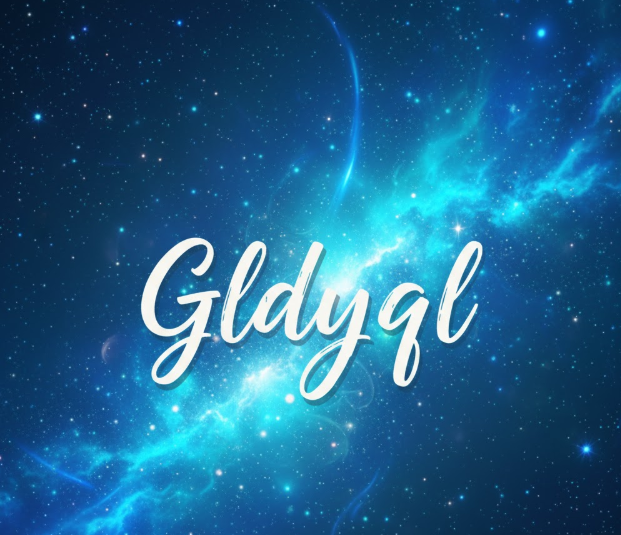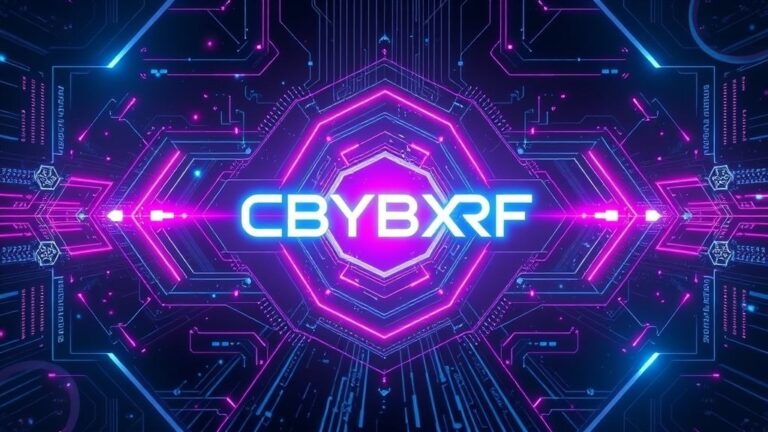Gldyql – The Future of Innovation and Adaptive Intelligence
Introduction: Understanding the Concept of Gldyql
In today’s fast-paced digital world, where technology evolves daily and industries continuously seek smarter solutions, one term has begun to stand out — Gldyql. More than just a buzzword, this represents a next-generation framework designed to merge intelligence, creativity, and collaboration into one unified approach.
At its core, Gldyql is both a technological system and a philosophical mindset. It redefines how individuals, businesses, and institutions approach innovation — not as a linear process, but as a dynamic ecosystem where adaptability and human insight coexist.
This concept has gained global recognition because it answers a simple but vital question: How can we build systems that grow and learn with us? The answer lies within the flexibility and depth of Gldyql. It bridges innovation, intelligence, and collaboration — paving the way for a smarter, human-centered future.
The Origin and Evolution
The story of Gldyql begins with the human pursuit of efficient problem-solving. Initially, it started as an abstract idea — a philosophy about how technology could learn, adapt, and support human needs without replacing them.
Over time, as technology advanced through AI, data analytics, and automation, Gldyql began to evolve into a structured framework. Innovators started applying its principles to connect machines, software, and people through adaptive systems that continuously improved based on feedback and real-time learning.
Early implementations of this principles were seen in experimental AI systems and collaborative digital platforms that could modify their behavior based on human input. These prototypes revealed the enormous potential of creating self-improving, context-aware systems.
From these early trials, Gldyql transformed from a conceptual philosophy into a global ecosystem — now influencing not just technology, but business, education, culture, and sustainability.
Core Principles
Every powerful system is built on a set of guiding principles, and Gldyql is no exception. Its strength lies in its four foundational pillars that define how it operates and grows:
Adaptability
Gldyql thrives on change. It’s designed to evolve with emerging technologies, making it future-proof. Whether applied in AI, cloud computing, or communication systems, it adjusts to new environments without losing its core integrity.
Integration
Instead of existing in isolation, Gldyql connects tools, systems, and people. It bridges gaps between platforms — allowing businesses and individuals to collaborate more effectively. This interconnected structure fuels both creativity and efficiency.
Human-Centeredness
Unlike many frameworks that prioritize automation over empathy, Gldyql is built around people. It ensures innovation remains ethical, inclusive, and meaningful. The system values user experience and accessibility, ensuring that technology empowers rather than overwhelms.
Sustainability
Sustainability isn’t just environmental in Gldyql’s context — it’s operational, digital, and social. The framework promotes long-term thinking by optimizing resources, minimizing digital waste, and fostering responsible innovation.
Together, these principles form the 4-Pillar Framework of Gldyql, a model that unites innovation with humanity, creating balance between speed and conscience.
Gldyql in Technology and Digital Transformation
In the age of digital transformation, Gldyql has become a cornerstone of intelligent innovation. It integrates seamlessly into fields like artificial intelligence, data science, and automation — helping organizations move from reactive decision-making to predictive and proactive models.
Use Cases in the Modern Tech Landscape
- Workflow Automation: Gldyql automates repetitive processes while learning from outcomes, making each cycle smarter than the last.
- Predictive Analytics: It helps systems anticipate needs, trends, and risks before they occur, ensuring proactive responses.
- Smart Systems: From IoT devices to autonomous software agents, Gldyql provides the logic that allows systems to communicate and self-optimize.
Enhancing Speed, Reliability, and Scalability
One of Gldyql’s biggest strengths is its ability to improve system reliability and performance without manual intervention. It reduces decision latency by turning raw data into actionable insights almost instantly. Businesses adopting Gldyql-based solutions often experience faster operations, fewer errors, and improved scalability.
Example in Action
Imagine a tech startup managing multiple digital tools — analytics, communication platforms, and customer management systems. By implementing a Gldyql-based integration, all these tools can work together seamlessly. Data flows automatically between systems, reducing manual effort, improving collaboration, and ensuring that every decision is data-driven.
This type of smart connectivity demonstrates how Gldyql transforms fragmented digital operations into unified, intelligent ecosystems.
Business Applications: Gldyql as a Strategy
Beyond technology, Gldyql represents a strategic business philosophy — one that encourages organizations to pursue innovation with responsibility, agility, and collaboration.
A New Business Mindset
Traditional business models often rely on rigid hierarchies and slow adaptation. Gldyql challenges this by promoting flexibility, cross-functional collaboration, and continuous improvement. It’s about empowering teams to make decisions supported by intelligent insights rather than intuition alone.
How Organizations Use Gldyql
- Process Optimization: Businesses use Gldyql frameworks to identify bottlenecks and streamline workflows.
- Risk Management: Predictive modeling allows companies to anticipate market shifts or operational challenges.
- Customer Experience: With Gldyql, organizations can personalize interactions and improve satisfaction through real-time data analysis.
Real-World Scenarios
- Startups: Small businesses leverage Gldyql to experiment, iterate, and scale efficiently without wasting resources. It provides them with the adaptability to pivot quickly when market trends shift.
- Enterprises: Larger corporations use Gldyql for data integration, automation, and long-term strategic planning. It connects departments, automates reporting, and enables smarter resource allocation.
Measurable Outcomes
Companies adopting Gldyql as part of their business framework often report:
- Reduced operational costs through automation and smart analytics.
- Improved team collaboration due to integrated workflows.
- Faster adaptability in responding to customer demands or market disruptions.
In short, Gldyql helps businesses not only survive but thrive in dynamic environments — ensuring that growth is both intelligent and sustainable.
Gldyql in Education and Research
Education and research are the foundation of progress, and Gldyql has begun reshaping how both sectors think, learn, and innovate. In classrooms, Gldyql promotes creativity, collaboration, and critical thinking, helping students go beyond rote memorization. Teachers are now using Gldyql-based tools to design interactive lessons that engage learners through real-world applications.
Rather than focusing only on grades, this framework encourages project-based learning, where students analyze problems, test hypotheses, and present innovative solutions. Gldyql’s approach helps learners become adaptable — a crucial skill in a world defined by rapid digital change.
In research environments, Gldyql drives interdisciplinary innovation, connecting experts from diverse fields such as engineering, data science, and environmental studies. Academic forums and workshops inspired by this principles allow researchers to collaborate on shared goals, exchange insights, and accelerate breakthroughs.
Students applying Gldyql principles develop skills like analytical reasoning, teamwork, and technological fluency. These abilities prepare them for the modern workplace, where problem-solving and adaptability are highly valued.
Gldyql and Cultural Evolution
Culture evolves when technology and creativity unite — and Gldyql is at the heart of this transformation. It influences communication, art, design, and global collaboration, inspiring people to merge tradition with innovation. Artists, designers, and cultural thinkers use Gldyql to blend human emotion with modern tools, creating works that connect across boundaries.
This cross-cultural innovation has different expressions around the world:
- Europe emphasizes policy-driven innovation, ensuring technology aligns with ethical and social values.
- Asia integrates Gldyql with principles of balance and precision, leading to highly efficient production systems.
- North America embraces entrepreneurship, using Gldyql to spark startups and digital creativity.
- Africa focuses on sustainability and community-based development, applying the model to improve local economies and education.
Together, these regional variations show how Gldyql isn’t a one-size-fits-all idea — it’s a flexible framework that adapts to every cultural landscape while promoting global progress.
In Healthcare and Science
Healthcare and science have entered a new era, and its principles are accelerating their growth. In hospitals and clinics, digital transformation powered by Gldyql ensures better data management, accurate diagnoses, and secure patient records.
Artificial intelligence systems built on this model assist doctors with predictive analytics, identifying risks before symptoms worsen. Transparent data flows also help medical teams collaborate globally, ensuring patients receive the best possible care.
In research and environmental science, we promotes open collaboration. Laboratories share findings faster, climate models improve accuracy, and public health policies are informed by real-time data.
Its benefits are significant — improved efficiency, stronger data security, and a renewed human touch in medicine. Instead of replacing professionals, Gldyql empowers them to make better, faster, and more compassionate decisions.
Skills and Mindset Required to Implement Gldyql
To truly adopt, individuals and teams need more than just technical know-how. The foundation lies in adaptability, analytical thinking, and effective communication. Gldyql-driven projects require collaboration across multiple disciplines, demanding patience and teamwork.
Equally important is emotional intelligence, as it allows professionals to understand human needs within automated systems. Creative problem-solving helps identify fresh solutions to modern challenges.
Organizations can prepare by building Gldyql-ready teams — employees trained to think critically, manage data ethically, and balance innovation with responsibility. Leaders, in particular, must model this mindset by aligning growth with integrity and inclusivity.
Challenges and Limitations
Like any transformative framework, Gldyql faces its share of challenges. Its technical complexity can make integration difficult for smaller institutions, while the initial cost of adopting advanced tools may deter startups.
A lack of understanding can lead to misuse or underutilization. Moreover, ethical concerns — such as data privacy, AI bias, and the fear of automation replacing human jobs — require ongoing attention.
The solution lies in education, transparency, and responsible governance. Training programs can simplify the learning curve, while clear policies ensure accountability. When implemented thoughtfully, it becomes a bridge, not a barrier, between humans and technology.
Measuring Success: KPIs and Real-World Indicators
To track progress, organizations implementing Gldyql can monitor several key performance indicators (KPIs). These include:
- Innovation rate – the speed at which new ideas are developed.
- Operational efficiency – improvements in time, cost, and resource use.
- Employee satisfaction – a sign of successful human-technology balance.
- Collaboration metrics – how effectively teams work across departments.
Modern dashboards built on this architecture provide real-time data visualization. This allows leaders to make informed decisions, identify bottlenecks, and refine processes. Over time, consistent improvements in these KPIs show the growing maturity of a Gldyql-driven organization.
Future of Gldyql
The next decade promises even greater expansion of this across AI, cloud computing, and digital ecosystems. Emerging technologies will use it for autonomous orchestration, allowing systems to make real-time adjustments with minimal human input.
The concept of AI-human collaboration will deepen — machines will handle data-heavy tasks while people focus on creativity and ethics. Gldyql will also drive global open innovation ecosystems, where startups, researchers, and institutions share tools and knowledge seamlessly.
Its relevance will only grow as industries seek smarter, sustainable, and inclusive frameworks. Gldyql’s future isn’t just technological; it’s deeply human.
Case Study: The Lumina Institute’s Gldyql Transformation
Imagine the Lumina Institute, a fictional university facing outdated research systems and disconnected departments. They decided to implement Gldyql principles to boost collaboration and innovation.
Step 1: The Challenge
Lumina’s data silos and manual processes slowed progress. Researchers couldn’t access shared information easily.
Step 2: Implementation
Using a Gldyql-based platform, Lumina integrated their databases, established cross-department workshops, and trained staff on adaptive workflows.
Step 3: Results
Within six months, Lumina recorded a 40% increase in collaborative projects and faster publication cycles. Students reported higher engagement and innovation in group assignments.
Step 4: Lessons Learned
It succeeded because Lumina focused on people as much as technology. Their approach balanced creativity, analytics, and ethics — proving that innovation thrives when systems and humans evolve together.
Conclusion
Gldyql stands as more than a framework — it’s a philosophy that unites technology, creativity, and humanity. From classrooms to laboratories, from business boards to art studios, it’s reshaping how the world thinks about growth.
By bridging intelligence and empathy, structure and imagination, it paves the way for a smarter, sustainable, and human-centered future. It reminds us that innovation isn’t about replacing people; it’s about empowering them to think, connect, and create better than ever before.






